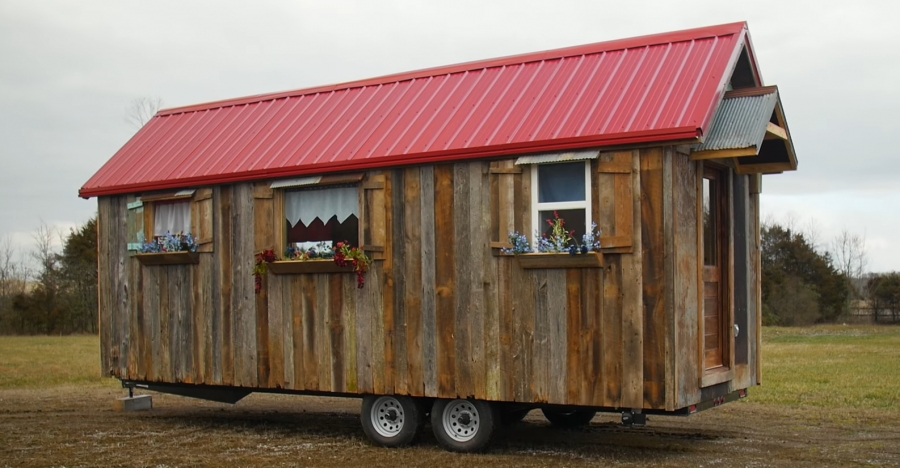Charming Rustic Tiny House With One Floor Living (No Sleeping Loft!)

If you love tiny house designs but hate the idea of climbing into bed every night, this tiny home might be for you.
This 8-foot by 24-foot tiny house on wheels has no loft, so it's perfect for people who don't want to deal with ladders or stairs. The good news is if there is some flexibility with the tiny house design, if you want to do something differently, perhaps a Murphy bed is more your style or you'd rather sleep upstairs, they can build custom designs and can make your dreams a reality. The layout of this tiny house on wheels works perfectly for a single person or a couple, the country design of the tiny house is also appealing and goes well with the barn wood used throughout the tiny house design. Shop Tiny Homes Aged and weathered reclaimed barn siding brings a unique look to tiny house designs, log cabins, modern home designs, and exteriors. The following are some things to know about using barn wood in your tiny house design.
Reclaimed barn board, often called barn wood or barn wood siding, is offered as a reclaimed paneling or siding product by several reclaimed lumber and architectural salvage companies throughout North America.
Reclaimed barn wood typically comes from salvaged weathered barn siding that has been exposed to the elements for decades or longer. The color of this antique wood ranges from gray/silver to deep brown. When painted, this siding ages more slowly, until the paint begins to wear and decay, eventually leaving a surface texture of fading and flaking colored paint.
Reclaimed barn wood age is often correlated with the depth of furrowing on the surface of the siding, with deeper furrows and thinner boards suggesting an older, more weathered plank.
Depending on the lighting in a room, older and more furrowed boards can present more surface contrast in a finished application. As barn board was often originally sawn from a farm’s nearby woodlot, the makeup of species can be varied and unpredictable, although it often comes from softwood lumber.Reclaimed salvaged barn board’s surface is naturally textured and weathered by the elements, so the thickness of these boards is rarely uniform. The thickness of barn boards generally varies from 1/2 inch to 4/4 inches with portions of some boards being thinner or thicker.
The color of barn board varies, depending on the type of exposure the siding experienced, and whether or not it was painted during its lifetime.
Common colors of barn board are silver, gray, and brown. Knots, checking, nail holes, and ghosting (variations in surface texture due to long-term placement of objects on the building) are present in varying degrees, depending on the lot. Common uses for barn board include use in outdoor siding, exterior wall and facade paneling, indoor accent and feature walls, furniture, trim, and other architectural and design elements. You can also use barnwood to make reclaimed hardwood flooring, outdoor decks, wall paneling, tables, countertops, cabinets, shelves, and anything else you can make with timber.
Photo Gallery
.png)







































